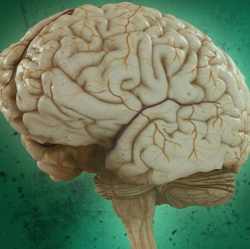
The research was based on psychoneuroimmunology, the study of the interaction between psychology and the nervous and immune systems of the human body. The team focused mainly on microglia, a type of glial cell that acts as the main immune defense in the central nervous system and comprise 10–15% of all cells found within the brain.
Under normal circumstances, microglia repair synapses between nerves cells in the brain and stimulate their growth. Repeatedly activated, however, microglia may damage nerve cells and trigger inflammation processes, a risk factor for mental diseases such as schizophrenia, the researchers found.
“Originally, the brain and the immune system were considered two separate systems,” explains Juckel in RUB’s RUBIN publication. “It was assumed that the brain operates independently from the immune system and has hardly anything to do with it. This, however, is not true.
“Direct neural connections from the brain to organs of the immune system, such as the spleen, do exist. And vice versa, immune cells migrate to the brain, and local immune cells carry out various tasks there, including disposing of damaged synapses. Notably, treatment with an immune system mediator such as Interferon alpha, used in hepatitis C treatment, for example, leads to depressions in 20 to 30 per cent of the patients.
The RUB studies of microglia focused on patients suffering from multiple sclerosis or Alzheimer’s. “The brain areas affected by inflammation or neurodegeneration are surrounded by a circle of microglial cells,” says Juckel. “In schizophrenia patients, the number of microglial cells is considerably higher than in healthy individuals. Here, the cells cause synaptic links between neurons to degenerate,” especially in schizophrenia patients.
Microglial cells can also be activated via the peripheral immune system (outside the brain). “Acute stress stimulates the immune system. In stress situations, the body readies itself for fight or flight [and] prepares itself for potential injuries,” explains researcher Astrid Friebe, whose team at the LWL clinic lab studies the mechanisms involved in these processes.
But under permanent stress, “microglial cells adapt to the new conditions, in a way. The more frequently they get triggered due to stress, the more they are inclined to remain in that mode. This is when microglial cells start to pose a danger to the brain.”
